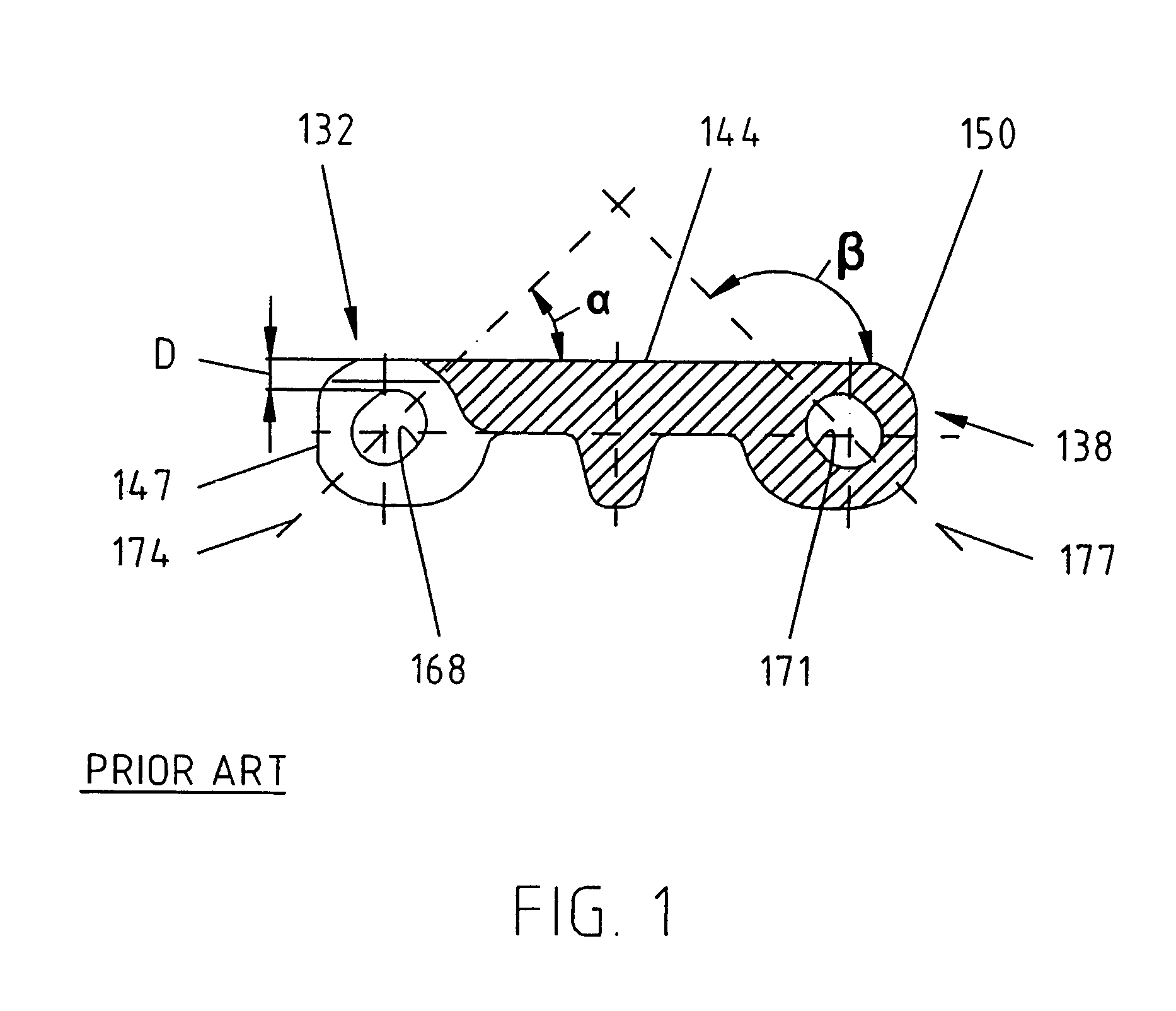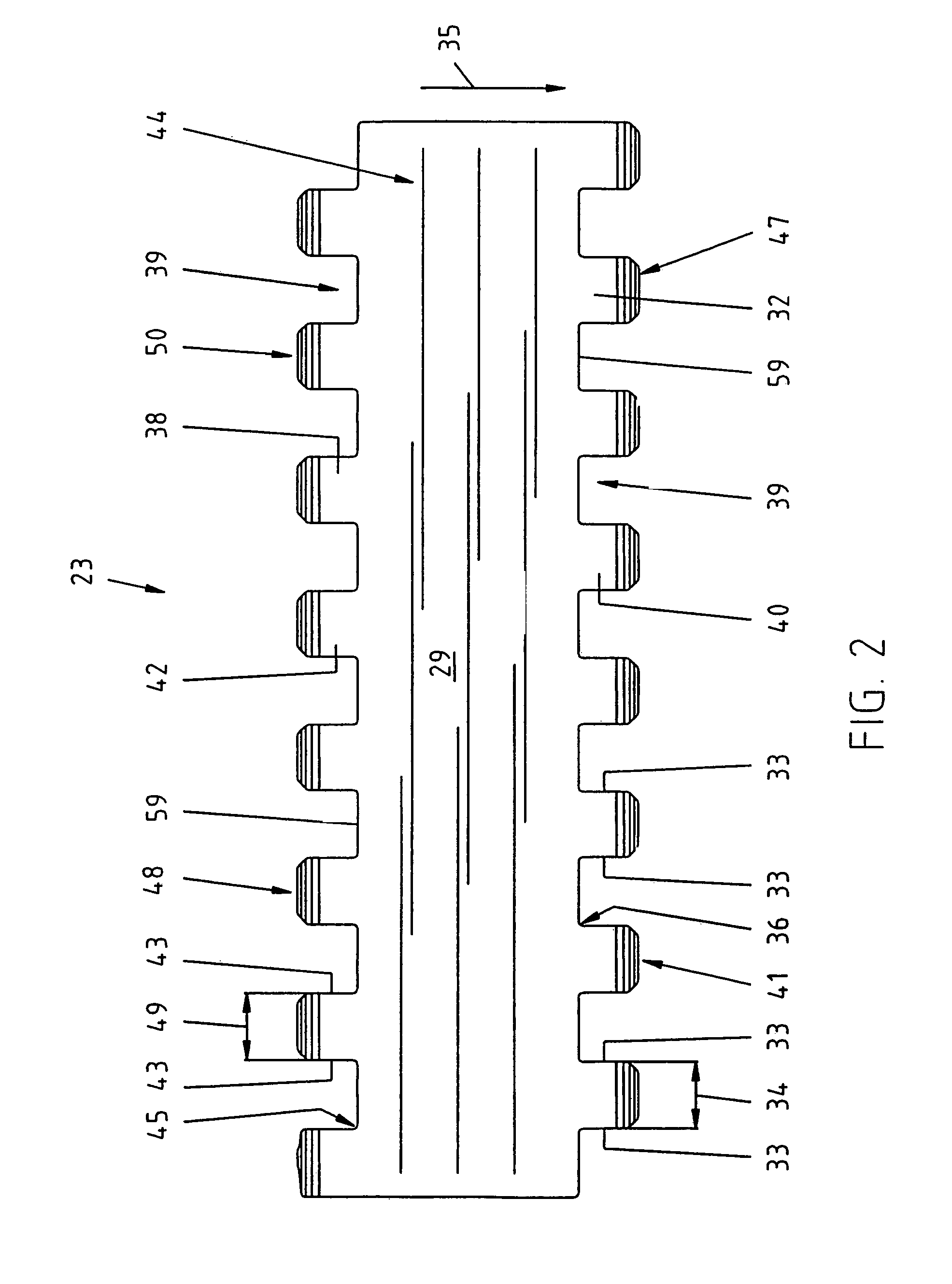Belt module with oblong pivot hole
a technology of oblong pivot holes and belt modules, which is applied in the direction of conveyors, transportation and packaging, etc., to achieve the effect of convenient maintenance and better cleaning
- Summary
- Abstract
- Description
- Claims
- Application Information
AI Technical Summary
Benefits of technology
Problems solved by technology
Method used
Image
Examples
Embodiment Construction
[0016]In FIG. 1, a prior art module is shown, the curved portion 147 of the link end 132 is shown at one end of the figure and at the opposite end of the figure the curved surface 150 at the end of the second link end 138 is shown. Also, first and second elongate transverse holes 168, 171 are shown. The transverse holes 168, 171 have longitudinal axes 174 and 177 respectively. The transverse holes 168, 171 are preferably elongate and oval-shaped. The transverse hole 168 is angled at an angle α which is 10° to 80° relative to the horizontal axis defined by top surface 144. The preferred embodiment provides for an angle α of approximately 45°. The transverse hole 171 on the opposite end of the module is rotated by approximately 90° such that it is disposed at an angle β approximately 100° to 170° to the top surface 144. The preferred embodiment for the second hole 171 is an angle β of approximately 135°. As shown, the shape of holes 168 and 171 being elongate and extending at a 45° an...
PUM
 Login to View More
Login to View More Abstract
Description
Claims
Application Information
 Login to View More
Login to View More - R&D
- Intellectual Property
- Life Sciences
- Materials
- Tech Scout
- Unparalleled Data Quality
- Higher Quality Content
- 60% Fewer Hallucinations
Browse by: Latest US Patents, China's latest patents, Technical Efficacy Thesaurus, Application Domain, Technology Topic, Popular Technical Reports.
© 2025 PatSnap. All rights reserved.Legal|Privacy policy|Modern Slavery Act Transparency Statement|Sitemap|About US| Contact US: help@patsnap.com



